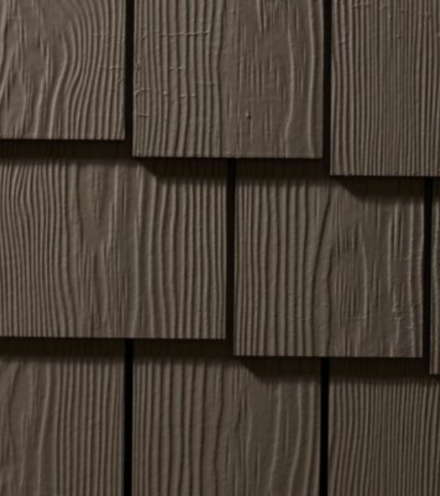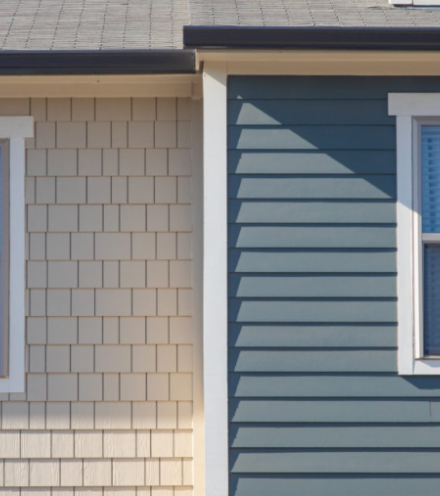Cedar is a fragrant, beautiful wood that many people prize for their homes. Installed on the exterior, however, cedar often brings more drawbacks than positives.
The traditional look and versatility of cedar can add to the appearance of a home when it’s been freshly installed, but the maintenance needed to keep it looking that way can be difficult. While cedar is one of the most commonly used types of wood for the exterior, the issues that it can have has led homeowners to search for a better solution for decades.
Problems with Cedar Siding
These five problems with cedar siding often mean that it falls short as a viable option in the long-term.
1. Durability
One of the biggest issues of cedar siding is its durability. Cedar is definitely more durable than some other woods, such as pine, but it still has its limitations. If it’s perfectly installed and meticulously maintained, it is possible for cedar to last for decades. The problem is that these two things rarely happen.
If the cedar is installed too close to the ground, it will absorb water and start to rot. It is also highly susceptible to rot around areas such as windows and doors or in areas where moisture may build up. To help protect it from these issues, it needs to be painted or stained, but all paint and stain on wood will eventually begin to peel and chip after exposure to the UV rays of the Sun. Once the paint is gone, the surface below is subject to the elements. It may absorb water and warp, or it may develop dry rot.
2. Maintenance
Maintenance is an issue that goes hand in hand with durability. In order to help your cedar siding last as long as possible, you’ll find yourself scraping and painting every few years. This is necessary to help prevent issues with moisture, but it’s also important for helping your home maintain its curb appeal, as well. Since cedar has a tendency to chip, peel, and fade, your home can begin to look run down after just a short period of time. This, in turn, can reduce its resale value.
Cedar also needs to be primed before it can be painted. The sap from the wood may bleed through the paint, staining it, if it isn’t primed properly, you’ll find yourself out there painting again and again just to maintain your curb appeal. And priming, while effective, will only increase the amount of maintenance and the costs of the cedar siding each time you paint.
3. Environmental Impact
Green building and the impact on the environment are important considerations to make when choosing any material for your home. Cedar siding may be a natural material that won’t require special disposal, but it can still have a negative impact on the environment.
Trees must be harvested responsibly to ensure that forests aren’t depleted. While many siding sources do conform to environmental practices, not all of them do, which means that your siding may not be eco-friendly. Likewise, frequent painting and staining of the siding may release harmful VOCs into the air, as well, further increasing the environmental impact.
Frequently needing to replace rotting sections of siding also means more trees being harvested to continuously repair your home’s exterior. At the low end, wood siding needs to be replaced after roughly 15 years if not well maintained. This further increases the carbon footprint of the home, simply through the continual need for new materials.
4. Longevity
When you install new siding on your home, you want it to last as long as possible. Cedar siding must be properly maintained at all times to reach its maximum lifespan, with many planks needing to be replaced after just 10 to 15 years, and even well-maintained cedar siding may only last around 20 to 30 years in some climates. Re-siding your home can be a considerable expense, and needing to redo sections every 10 to 15 years and replace the entire facade every 20 years can be a serious drawback for many homeowners.
5. Limited Choices
Cedar siding is beautiful, but you are often limited in what’s readily available for your home. Horizontal lap siding and cedar shingles are the two most common forms of the material. Occasionally, it’s also possible to find cedar siding in a board and batten style. Since these are some of the more common styles for homes, it can limit your options if you have a different architectural style or you just want something more contemporary. While this is one of the less severe issues with cedar siding, it is a drawback for homeowners that want to create a custom facade or that want to be able to mix and match styles and accents on their exterior.
Fiber Cement as an Alternative
Homeowners have been aware of many of these problems with cedar siding for decades, which is why they’ve continually tried to find better alternatives. Aluminum and vinyl were among the first alternatives, but they soon presented several issues of their own.
One of the more popular alternatives today that solves many of these issues is fiber cement shakes & shingles.
Fiber cement produces a heavy, durable siding that comes in a range of different styles from cedar-look shingles and planks to architectural panels. It resists insect activity and moisture and is also flame retardant. It can be purchased already primed and ready for painting to make installation easier, or it can be found in a range of stylish colors, all of which last much longer than traditional paint on wood. This makes fiber cement a lower maintenance alternative to cedar, with warranties for 30 years or more. Fiber cement is attractive, versatile, and can help you overcome many of the challenges of using cedar. It can even count toward LEED credits for those building more eco-friendly homes.
Choose a Better Siding
Fiber cement siding outperforms cedar siding in every way. Whether you’re looking for smooth panels for a modern home, a flame-resistant siding for a home in a wildfire affected area, or you just want a material that can go longer between maintenance, fiber cement is the product you’re looking for.
Consider fiber cement siding and contact Allura to speak with an expert for more details.




